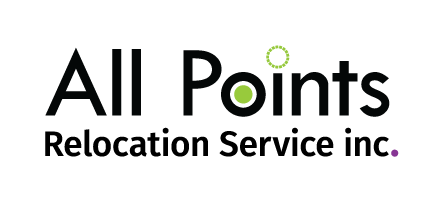Relocation Policies: Understanding Employee Sentiments
Introduction
In the competitive landscape of corporate relocation, ensuring employee satisfaction while maintaining a competitive edge is crucial. Organizations often rely on benchmarking their relocation policies against industry standards to achieve this. While benchmarking is a valuable practice, it primarily offers an external perspective. A more comprehensive approach that not only incorporates benchmarking but also delves deeper into internal dynamics is the SWOT (Strengths, Weaknesses, Opportunities, Threats) analysis. This article explores the advantages of conducting SWOT analyses for relocation policies, emphasizing how this method can provide a deeper understanding of employee sentiments and lead to more effective and personalized relocation strategies.
The Power of SWOT Analyses
Holistic View
SWOT analyses provide a holistic view of an organization’s relocation policies. Unlike benchmarking, which focuses on comparing against industry standards and competitors, SWOT analyses consider both external and internal factors. This dual perspective allows organizations to understand not only where they stand in the market but also how their internal operations, culture, and employee perceptions align with their relocation policies.
Dynamic Approach
A SWOT analysis is inherently dynamic. It evolves with the organization and the changing environment, enabling continuous improvement. While benchmarking provides a snapshot in time, SWOT analyses offer a framework for ongoing assessment and adaptation, making them a more robust tool for long-term strategic planning.
Understanding Employee Sentiments
Employee-Centric Analysis
One of the primary reasons SWOT analyses surpass benchmarking is their ability to uncover how employees truly feel about current relocation policies. Benchmarking may highlight industry best practices but often overlooks the emotional and practical aspects that significantly impact employee satisfaction and engagement.
Tailored Insights
By incorporating employee feedback, SWOT analyses offer tailored insights that reflect the specific needs and preferences of the workforce. This deep understanding helps organizations create relocation policies that cater to individual circumstances, resulting in a more satisfying and supportive relocation experience for employees.
Benefits of SWOT Analyses
Identifying Employee Needs and Preferences
SWOT analyses allow organizations to identify the specific needs and preferences of their employees. This involves direct engagement with employees through surveys, interviews, and focus groups to gather comprehensive feedback. Understanding these needs helps tailor relocation policies to address unique challenges and expectations, ensuring a more personalized and effective approach.
Incorporating Employee Feedback
Unlike benchmarking, SWOT analyses actively involve employees in the process. By seeking their input and feedback, organizations create policies that reflect employees’ concerns and aspirations. This inclusive approach fosters a sense of belonging and value among employees, enhancing their overall satisfaction and commitment to the organization.
The SWOT Process
Strengths
The first step in a SWOT analysis is to assess the strengths of current relocation policies. This could include competitive benefits, efficient processes, positive employee feedback, and any unique features that set the organization apart. Identifying these strengths helps build on what is already working well and leverages these aspects to enhance overall policy effectiveness.
Weaknesses
Next, it’s crucial to identify the weaknesses or pain points in the policies. This involves a critical evaluation of areas that need improvement, such as inefficient processes, lack of employee support, or negative feedback. Addressing these weaknesses ensures that the policies align better with employee expectations and industry standards.
Opportunities
Exploring opportunities for innovation and enhancement is a key component of the SWOT process. This includes identifying emerging trends, technological advancements, or changes in the workforce landscape that can be leveraged to improve relocation policies. For instance, the rise of remote work and digital tools can offer new ways to support employees during relocation.
Threats
Finally, it’s essential to consider potential threats that could impact relocation policies. These could include changing regulations, evolving employee expectations, economic fluctuations, or competitive pressures. By proactively addressing these threats, organizations can stay ahead of challenges and ensure their policies remain resilient and effective.
Conclusion
In conclusion, while benchmarking provides valuable external insights, SWOT analyses offer a superior approach to crafting relocation policies that truly resonate with employees. By understanding their sentiments and actively involving them in the process, organizations can create policies that are not only competitive but also tailored to the unique needs of their workforce. SWOT analyses empower organizations to go beyond industry standards and create relocation policies that foster employee satisfaction and engagement.
By embracing SWOT analyses, organizations can achieve a deeper understanding of their internal strengths and weaknesses, identify new opportunities for improvement, and mitigate potential threats. This comprehensive approach ensures that relocation policies are not only aligned with industry best practices but also with the specific needs and preferences of employees, leading to a more supportive and effective relocation experience.
Stay tuned for more articles on enhancing talent management and improving corporate relocation experiences. Understanding and leveraging the power of SWOT analyses can transform how organizations approach relocation policies, making them a vital tool in the realm of corporate relocation.
Additional Considerations
To further enhance the effectiveness of SWOT analyses for relocation policies, consider the following additional strategies:
- Regularly Update SWOT Analyses: The business environment and employee needs are constantly evolving. Regular updates to the SWOT analysis ensure that relocation policies remain relevant and effective.
- Integrate Technology: Utilize digital tools and platforms to collect and analyze employee feedback efficiently. Technology can also facilitate real-time updates to relocation policies based on ongoing SWOT analysis results.
- Encourage Open Communication: Foster a culture of open communication where employees feel comfortable sharing their feedback and suggestions. This ongoing dialogue can provide valuable insights for continuous improvement.
- Benchmark as a Supplement: While SWOT analyses offer a more comprehensive approach, benchmarking should still be used as a supplementary tool. Comparing against industry standards can provide useful external context and highlight areas for improvement.
- Leadership Involvement: Ensure that senior leadership is involved in the SWOT analysis process. Their support and commitment can drive the successful implementation of insights gained from the analysis.
By implementing these strategies, organizations can maximize the benefits of SWOT analyses and create relocation policies that not only meet industry standards but also exceed employee expectations. This holistic and employee-centric approach is key to achieving long-term success in corporate relocation.

